Liposuction Surgery
Liposuction is a popular cosmetic procedure designed to remove stubborn fat deposits that are resistant to diet and exercise. Whether you’re looking to enhance your body contours, sculpt specific areas, or improve your overall silhouette, liposuction offers a solution to target localized fat that can’t be eliminated through traditional weight loss methods.
Areas of the Body You Can Get Liposuction
Liposuction is a versatile body contouring procedure designed to target and remove stubborn fat deposits that resist diet and exercise. At Clinic 360, our expert surgeons specialize in treating a variety of areas to help patients achieve their aesthetic goals and create a more balanced, sculpted physique.
From commonly treated regions like the abdomen and thighs to more specific areas like the chin and back, liposuction can be customized to address your unique needs. Whether you’re looking to enhance your waistline, slim your arms, or contour your legs, liposuction offers a tailored approach to refining your natural shape and boosting your confidence.
Discover the possibilities with our advanced liposuction techniques and explore the areas we can transform to help you look and feel your best.
Chin Liposuction
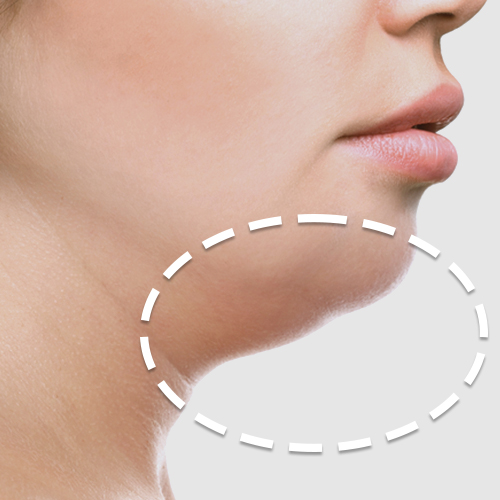
Chin liposuction is a highly effective procedure designed to eliminate excess fat beneath the chin and along the jawline, commonly referred to as a “double chin.” This minimally invasive technique sculpts the area, creating a more defined and contoured profile.
Ideal for individuals with good skin elasticity, chin liposuction removes stubborn fat deposits that are resistant to diet and exercise. The procedure involves small, discreet incisions, and recovery is generally quick, with most patients returning to daily activities within a few days. Chin liposuction can be a standalone treatment or combined with other facial procedures for enhanced results.
Thigh Liposuction
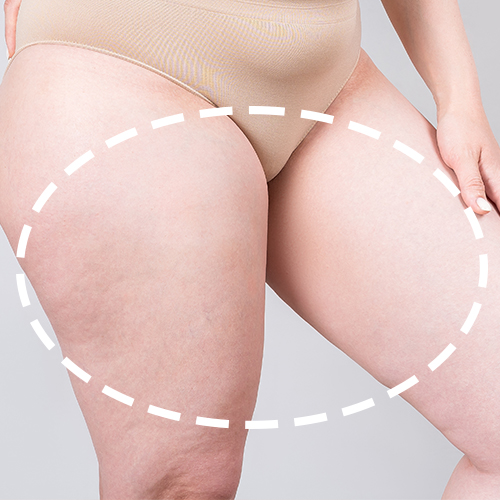
Liposuction of the thighs is ideal for sculpting the inner and outer thighs. The inner thighs are often prone to chafing and can appear disproportionate, while the outer thighs, or “saddlebags,” can cause a wider appearance. Liposuction can help create leaner, smoother legs that look more proportionate to the rest of your body. It’s also popular among patients looking to eliminate the stubborn fat that prevents their thighs from appearing toned.
Arm Liposuction

Arm liposuction targets excess fat in the upper arms, an area that can be challenging to tone through diet and exercise alone. This procedure is ideal for individuals who are unhappy with the appearance of sagging or bulky arms and want a sleeker, more contoured look.
During the procedure, excess fat is carefully removed through small incisions, and the arms are sculpted to achieve a natural, toned appearance. Arm liposuction can be performed alone or combined with other procedures, such as an arm lift, for more comprehensive results.
Abdomen and Flanks Liposuction

Fat around the abdomen and waist is one of the most stubborn areas to address with diet and exercise alone. Liposuction in these areas involves removing fat deposits from the upper and lower abdomen as well as the flanks, commonly known as “love handles.” This procedure not only flattens the stomach but also defines the waistline, resulting in a slimmer and more contoured midsection. For those with excess skin, it can also be combined with a tummy tuck for even more dramatic results.
Back and Bra Roll Liposuction
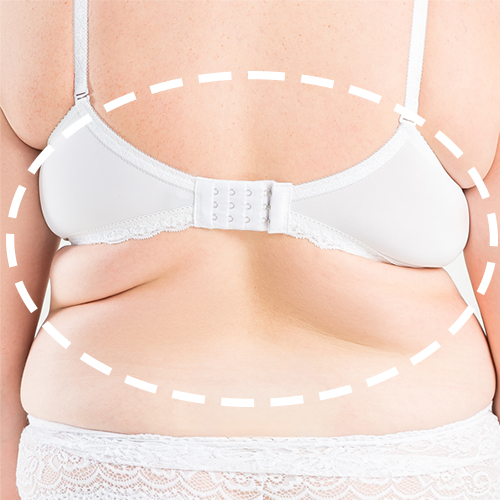
Fat in the upper and lower back, particularly around the bra line, can be difficult to target with exercise alone. Liposuction smooths the back by removing these deposits, creating a more streamlined silhouette. This is especially beneficial for women who experience discomfort or are self-conscious about bulging in these areas.
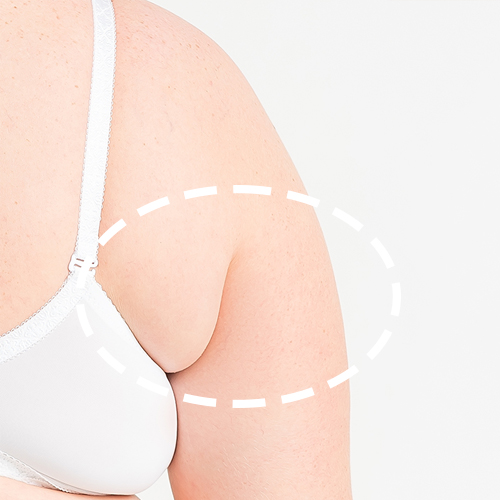
Armpit liposuction, also known as axillary liposuction, is a procedure designed to remove excess fat from the underarm area, creating a smoother, more sculpted appearance. This procedure is ideal for individuals who struggle with localized fat in the armpits, which can impact the overall contour of the arms and chest.
Performed through small, discreet incisions, axillary liposuction uses a thin cannula to gently remove fat while minimizing scarring. The result is a more defined, leaner look, helping patients feel more confident in sleeveless clothing or when showing off their arms.

Gynecomastia is a condition characterized by the enlargement of male breast tissue, often resulting in discomfort and self-consciousness. Liposuction for gynecomastia is a highly effective solution for reducing excess fat and restoring a firmer, more masculine chest contour.
This minimally invasive procedure involves removing excess fat and, in some cases, glandular tissue through small incisions. The result is a smoother, flatter chest with improved definition.
What is Lipo 360?
Lipo 360 is a comprehensive liposuction procedure that targets fat around the entire midsection, including the abdomen, flanks, back, and waistline. Unlike traditional liposuction, which focuses on a single area, Lipo 360 is designed to contour and sculpt the body from all angles, providing a smoother and more balanced silhouette.
Lipo 360 is an excellent choice if you’re near your ideal weight but struggle with stubborn fat deposits around your midsection. It’s not a weight-loss procedure but rather a body contouring treatment designed to enhance your natural shape.
Liposuction Techniques
There are numerous liposuction techniques available ranging from those that are no longer considered safe (such as Dry Liposuction) to those that meet more current industry standards (such as Tumescent Liposuction). Depending on the liposuction technique chosen and the amount of fat removed, the performing surgeon may choose to use either local or general anaesthetic. Below are the most common techniques for liposuction:
1. Tumescent Liposuction
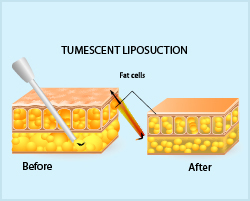
Tumescent Liposuction is viewed as the safest method for liposuction as it has reduced blood loss to as little as 1%. Other benefits include the fact that it has made certain procedures that used to require general or epidural anaesthesia now feasible with only local anaesthetic. The use of a localized anaesthetic such as lidocaine permits surgeons a window of 10 hours for surgery to safely take place, and allows the patient to avoid the post-operative nausea and vomiting associated with general anaesthesia.
2. Ultrasonic-Assisted Liposuction (UAL)
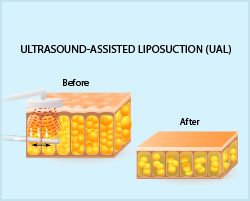
Liposuction vs Tummy Tuck
A tummy tuck (also known as an abdominoplasty), however, focuses on the midsection exclusively. And while liposuction is primarily geared towards individuals who carry an excessive amount of fat, abdominoplasty is well suited to post-bariatric cases, where patients have large amounts of loose skin, possibly because of recent extreme weight loss.
Liposuction & Fat Transfer
There are a number of possible fat transfer procedures. Lipografting (also known as ‘fat grafting’), for instance, can be used to smooth out dermal regions affected by acne, scarring, injury, or past surgeries. Autologous fat grafting, another fat transfer procedure, can also help reconstruct female breasts after single- or double-mastectomies.
The Risks of Liposuction
Liposuction is a safe and effective procedure when performed by a qualified surgeon, but like any surgery, it carries some risks. The most common risks include temporary bruising, swelling, and mild discomfort, all of which typically subside during recovery. Small incisions may leave minor scars, but these usually fade over time with proper care.
Less commonly, some patients may experience numbness or changes in sensation, which usually resolve naturally, or slight irregularities in skin contour if fat removal is uneven. Proper technique and a skilled surgeon minimize these concerns.
At Clinic 360, we prioritize your safety by using advanced techniques and providing thorough pre- and post-operative care instructions to ensure a smooth recovery and beautiful, natural-looking results.
We Offer
Financing through Medicard®
Liposuction Recovery
Recovering from liposuction is typically straightforward, and most patients can return home on the same day as the procedure—there’s no need to stay overnight at the clinic.
After the surgery, you may experience some swelling, bruising, and mild discomfort in the treated areas, which is normal and can be managed with prescribed pain medications. A compression garment will be provided to wear during the recovery period to minimize swelling, support the treated areas, and help your body adjust to its new contours.
Most patients can resume light activities within a few days, but it’s essential to avoid strenuous exercise or heavy lifting for about 4–6 weeks or as directed by your surgeon. Swelling will gradually subside, with the final results becoming more visible as your body heals.
At Clinic 360, our team will provide you with detailed post-operative care instructions and schedule follow-up appointments to monitor your progress and ensure a smooth recovery. By following these guidelines, you’ll be on your way to enjoying your beautifully contoured results in no time!
Liposuction FAQ
What is liposuction?
Where on my body can I get liposuction?
Do men get liposuction as well?
Is liposuction considered a safe surgery?
What are the main risks and complications associated with liposuction?
The main risks, complications, and unpleasant side-effects associated with liposuction include:
- Infection
- Fat Embolism
- Inflammation
- Organ & Nerve Damage
- Skin Death
- Burns
- Excessive Bruising
- Toxicity from Anesthesia (Lidocaine Toxicity)
- In Rare Cases, Fatality
What increases the risks of complications in liposuction surgery?
What can I do to reduce my risks when undertaking liposuction surgery?
How long will I be in the clinic after undergoing liposuction?
In most cases, you can go home the same day you undergo liposuction. The actual liposuction procedure takes about 1-3 hours, depending on the number of areas being treated. Patients are then monitored for 1-3 hours after the surgery in the recovery room. On average, the whole process requires 4-6 hours in the clinic. Patients do not need to stay overnight in the clinic.
Can I drive myself home from the clinic after liposuction surgery?
Due to the lingering effects of the anesthetic, you can not operate a vehicle for 24 hours after surgery, and until you have stopped using any medication that may affect cognition.
You would need to arrange ahead of time to have a friend or family member drive you home following surgery.
Will I be hurting after liposuction surgery?
What will the treated area look like while it heals?
Do liposuction wounds need to be cleaned?
How much downtime will I need post-liposuction surgery?
Is there a difference between liposuction and a tummy tuck?
Can I use liposuction to do a fat transfer?
What are some of the benefits of getting a fat transfer?
Is liposuction covered by insurance?
Can I get a liposuction cost estimate over the phone?
What kind of information can I expect in a liposuction cost estimate?
What factors influence liposuction surgery fees?
- The number of areas being treated.
- The size of the patient.
- The degree of difficulty the surgeon anticipates.
What is the objective of liposuction procedures?
What causes a “double chin”? What surgical options are available for this condition and what is the process like?
I have lots of loose skin on my upper arm. Is liposuction the appropriate procedure for my problem, or are there other options I should consider?
Can liposuction help treat large fat deposits on the male chest or “gynecomastia”?
In what other areas of the body can liposuction be performed?
You can get liposuction on problem areas such as the abdomen, hips, thighs, arms, buttocks, back, neck, female breasts, and face. Other fatty areas that benefit from liposuction include, “buffalo humps” (the deposit of fat on the upper back and neck), bra fat, and “belly pooches” (the fat localized around the lower belly, but not throughout the abdomen).

